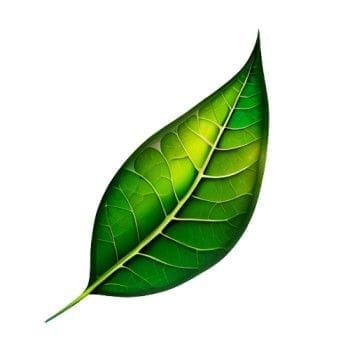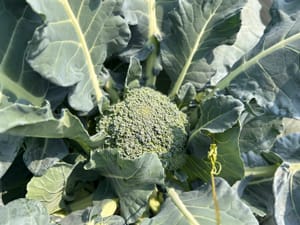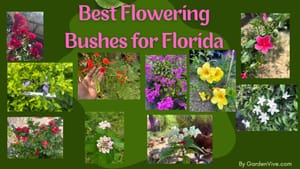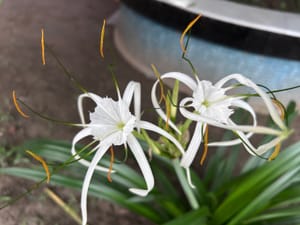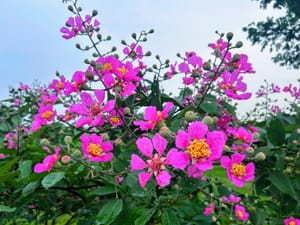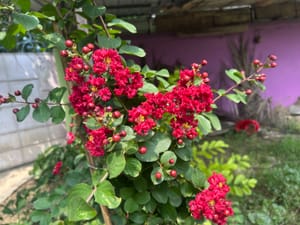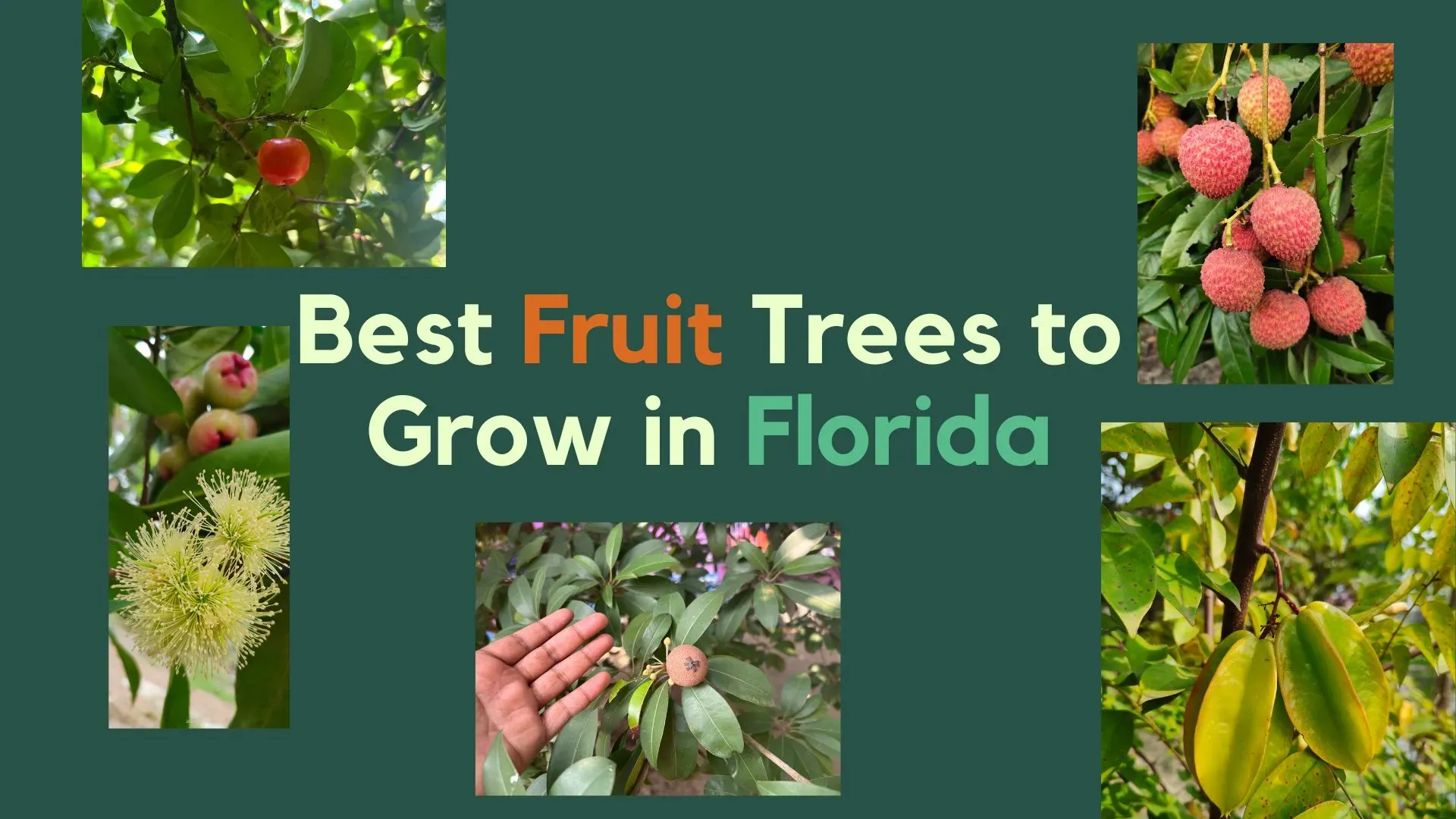
There is a huge difference between buying fruits and harvesting fruits from your trees. I have two separate gardens, one is attached to my home, I prefer to grow flowering plants and veggies there and another one is a bit away from my house to grow only fruit trees. Fruit preferences vary from person to person, and this article is for everyone who loves growing fruit trees. I have listed the best fruit trees to grow in Florida in this article.
So what are the parameters to select the best ones? Some might say the fruits need to be delicious, others might prioritize fruit trees that are easy to grow in Florida, or perhaps trees that offer a good harvest in this region. I have considered everything and made a balanced list.
Note: This is an article on the best fruit trees that we can actually grow in Florida. So I will consider the fruit trees that can be beneficial for us and will not focus on native trees. though all of these fruit trees are readily available at nurseries.
I know the climate is not the same in North Florida, South Florida, and Central Florida, considering that, besides every fruit tree I will mention the region suitable for that tree.
Update: I have created a complete chart on homemade fertilizers for fruit trees. You can find when to feed what type of organic fertilizer based on the growth stage of your fruit tree.
At the end of the article, I will mention a few fruit trees that you should avoid growing in Florida.
List of Fruit Trees to Grow in Florida
| Tree Name | Suitable Regions | Max Height | Fruiting Time / Harvest Season | First Harvest (After Planting) | Planting Time (Months) |
|---|---|---|---|---|---|
| Mango | Central Florida, South Florida | 30-100 ft | Summer | 3-5 years | March to June |
| Avocado | Central Florida, South Florida | 40-60 ft | Fall to Winter | 3-4 years | February to May |
| Persimmon | North Florida, Central Florida | 15-60 ft | Fall | 2-3 years | December to February |
| Papaya | Central Florida, South Florida | 10-15 ft | Year-round in warm climates | 6-12 months | March to September |
| Banana | Central Florida, South Florida | 10-25 ft | Year-round (varies) | 10-15 months | April to June |
| Pineapple Guava | North Florida, Central Florida | 10-15 ft | Late Summer to Fall | 3-4 years | January to April |
| Fig | North Florida, Central Florida, South Florida | 10-30 ft | Summer | 1-2 years | February to April |
| Starfruit (Carambola) | Central Florida, South Florida | 20-30 ft | Late Summer to Fall | 1-2 years | March to May |
| Mulberry | North Florida, Central Florida, South Florida | 30-50 ft | Spring | 2-3 years | December to February |
| Guava | Central Florida, South Florida | 10-30 ft | Year-round (varies) | 2-4 years | March to August |
| Lychee | Central Florida, South Florida | 30-40 ft | Summer | 3-5 years | January to March |
| Wax Apple | South Florida | 10-30 ft | Summer | 1-2 years | February to April |
| Pomelo | Central Florida, South Florida | 15-50 ft | Winter | 4-5 years | January to March |
| Barbados Cherry | Central Florida, South Florida | 10-20 ft | Spring to Fall | 1-2 years | February to May |
| Carissa Carandas (Natal Plum) | South Florida | 6-10 ft | Summer | 2-3 years | March to May |
| Jujube | North Florida, Central Florida | 15-30 ft | Fall | 2-3 years | January to March |
| Sapodilla | South Florida | 30-60 ft | Year-round | 5-8 years | March to May |
| Coconut | South Florida, Coastal Areas | 50-80 ft | Year-round (Peak: Summer and Fall) | 5-7 years | March to May |
The above information table is very regular information.
The first harvesting time after plantation can depend on several factors mentioned below:
- Variety of the tree
- Plantation method (From cuttings or direct seed sowing)
- Climate
The fruit tree photos I am sharing in this article, all are grown by me. It took a lot of time and effort to care for those and see the results. This is the beginning of winter and most of the fruit trees in Florida are ready to harvest in the summer. Few of the photos were taken in the previous year when there were fruits on those trees. Few are taken this morning when there are no fruits at all as this is not the fruiting time for those trees. So once I get fruits I will try to update the photos.
I have grown a few of these in Zone 10 and my uncle has grown in Zone 9. I am sharing our experiences growing fruit trees in Florida and I hope the tips are going to be useful for you.
Let's start with Mango...
Mango Tree in Florida
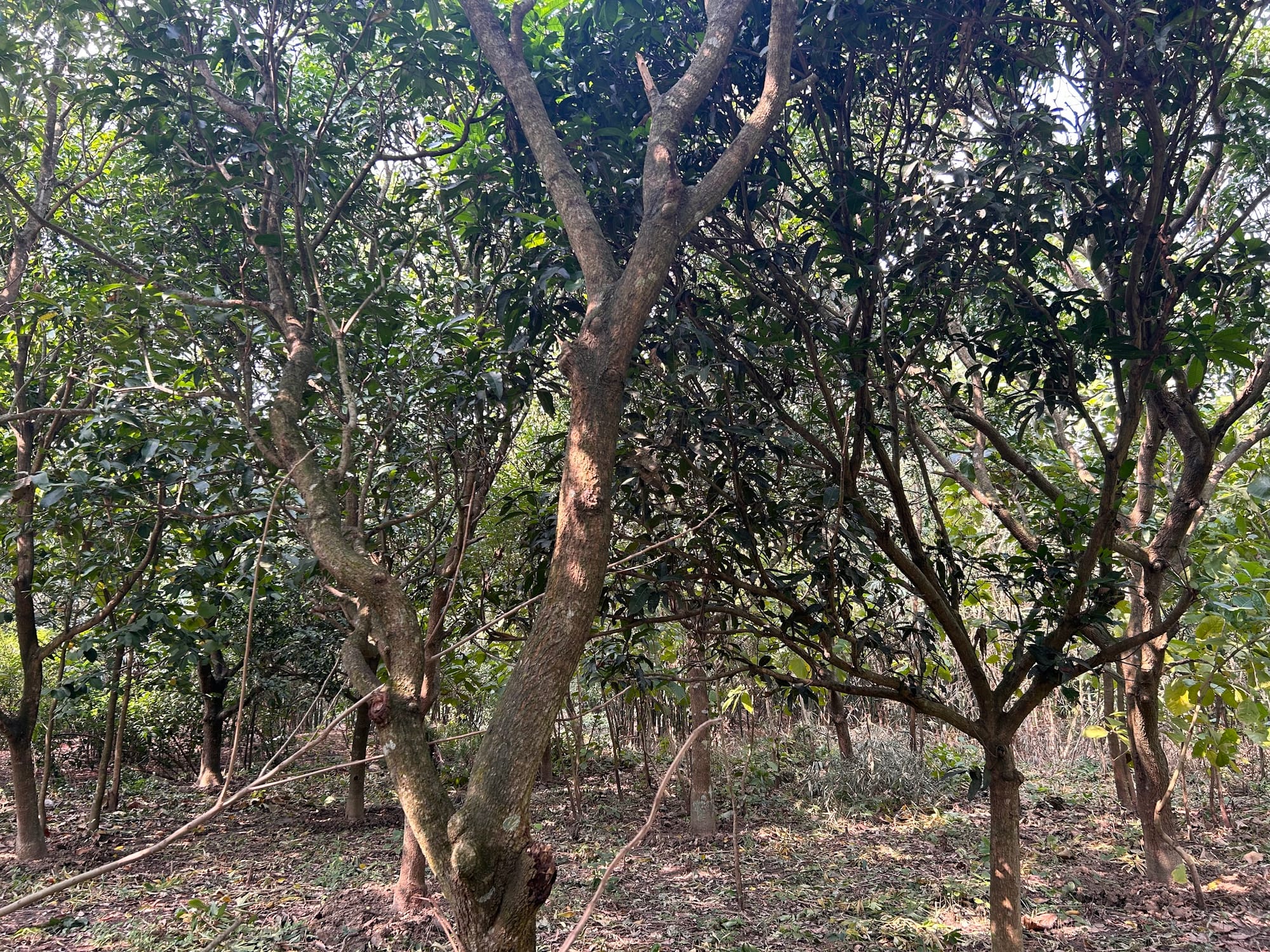
While planting mango trees make sure to give at least 15 feet of spacing in between two adjacent mango trees.
I never grow mangoes from seeds as it will take a longer time in first harvesting. If you don't want your mangoes to grow too tall, start pruning from the second growing season.
Mango tree starts to grow new foliage after the fruiting season. In the heavy storms in Summer, you can witness a lot of mangoes falling from the trees. I have almost 35 mango trees in the garden and this is what I got in the last hurricane.
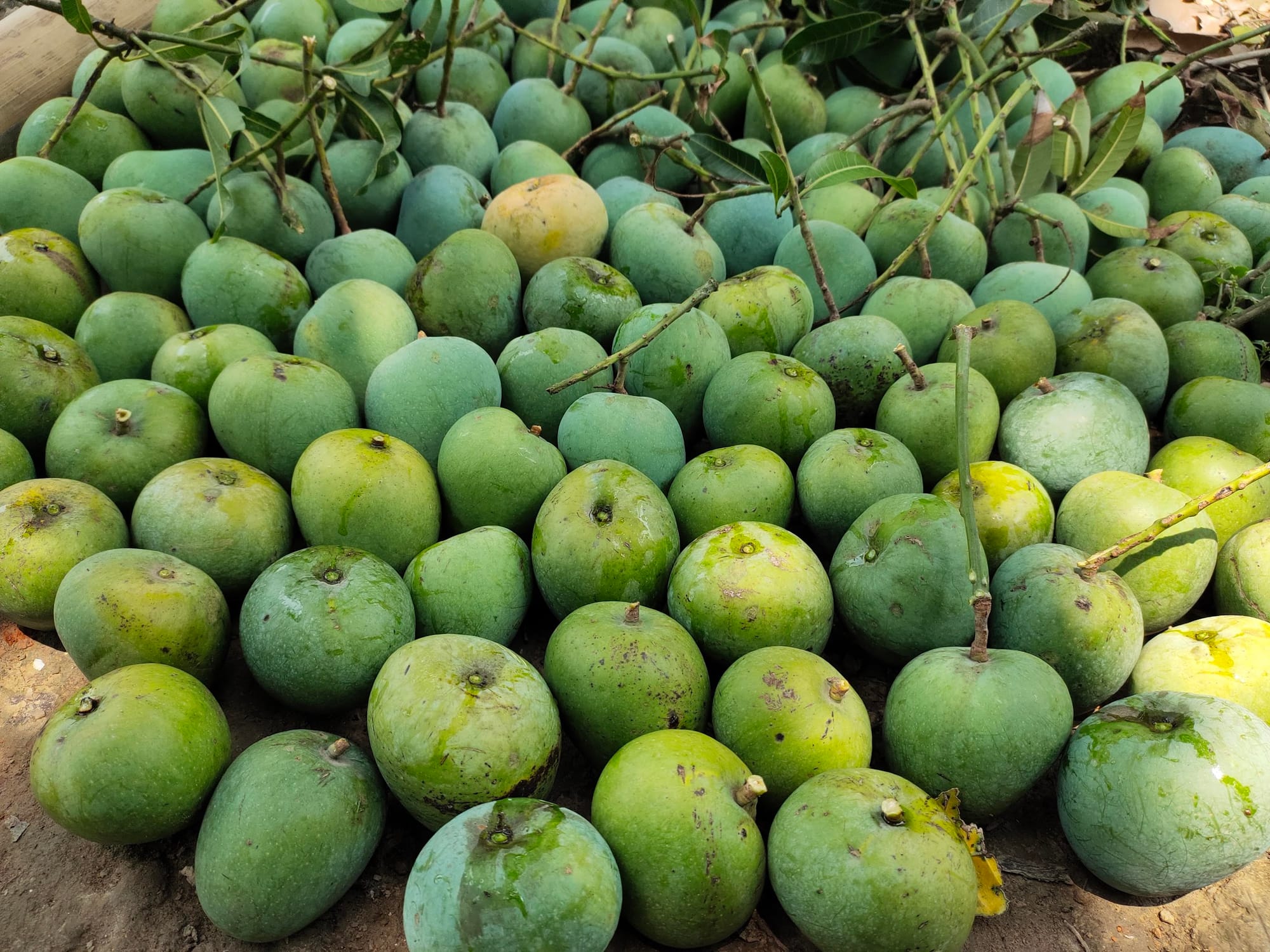
I know hurricane is a fear to Florida gardeners, check How to Protect Your Plants from Hurricanes.
Avocado
A lot of people grow avocados in Central and South Florida, but as per my personal experience, South Florida is not good for Avocado growing due to the high humidity. They prefer slightly acidic soil and apply coffee grounds or organic matter to the soil. (You can also use sulfur)
If you want to grow fruit trees in small space in South Florida, read: Best fruit trees to grow in small space in South Florida.
Best avocado varieties to grow in Florida
| Zone | Variety | Characteristics | Harvest Season |
|---|---|---|---|
| South Florida | Simmonds | Large fruit, smooth green skin | June - September |
| South Florida | Donnie | Medium-sized fruit, creamy texture | July - August |
| Central Florida | Choquette | Large fruit, buttery flavor | October - December |
| Central Florida | Hall | Oval shape, smooth green skin | September - November |
| North Florida | Brogden | Cold-hardy, small to medium fruit | July - August |
| North Florida | Winter Mexican | High oil content, thin skin | December - March |
Lychee
This is really an underrated fruit tree in Florida. I love how it tastes. Lychee loves a little bit of sandy soil.
Tip: If you want great harvesting do this: Once you harvest your Lychees, break the head of the each branch. (Top 6 inches)
It requires full sunlight. You can grow this in Zone 10 and 11. In central Florida, you need to take extra winter care.
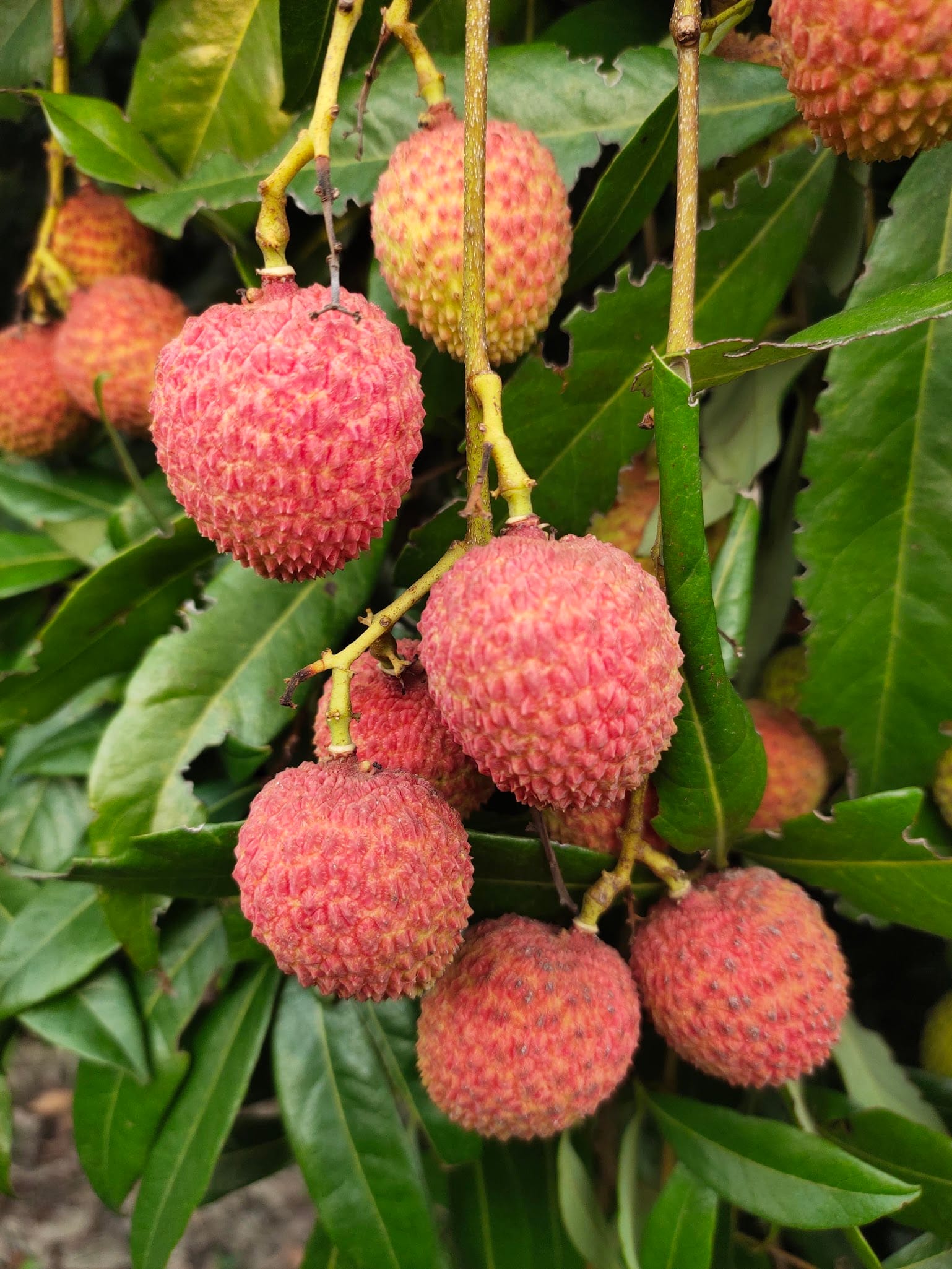
Do not try to eat when the outer skin is green, it will be too sour.
Sapodilla in Florida
Sapodilla (Manilkara zapota), also known as "chico," can be grown in South Florida.
If you wish, you can check my complete growing guide for sapodila.
Again, it needs sandy soil and a warmer climate. They don't need pruning. The branches will spread sidewise without pruning.
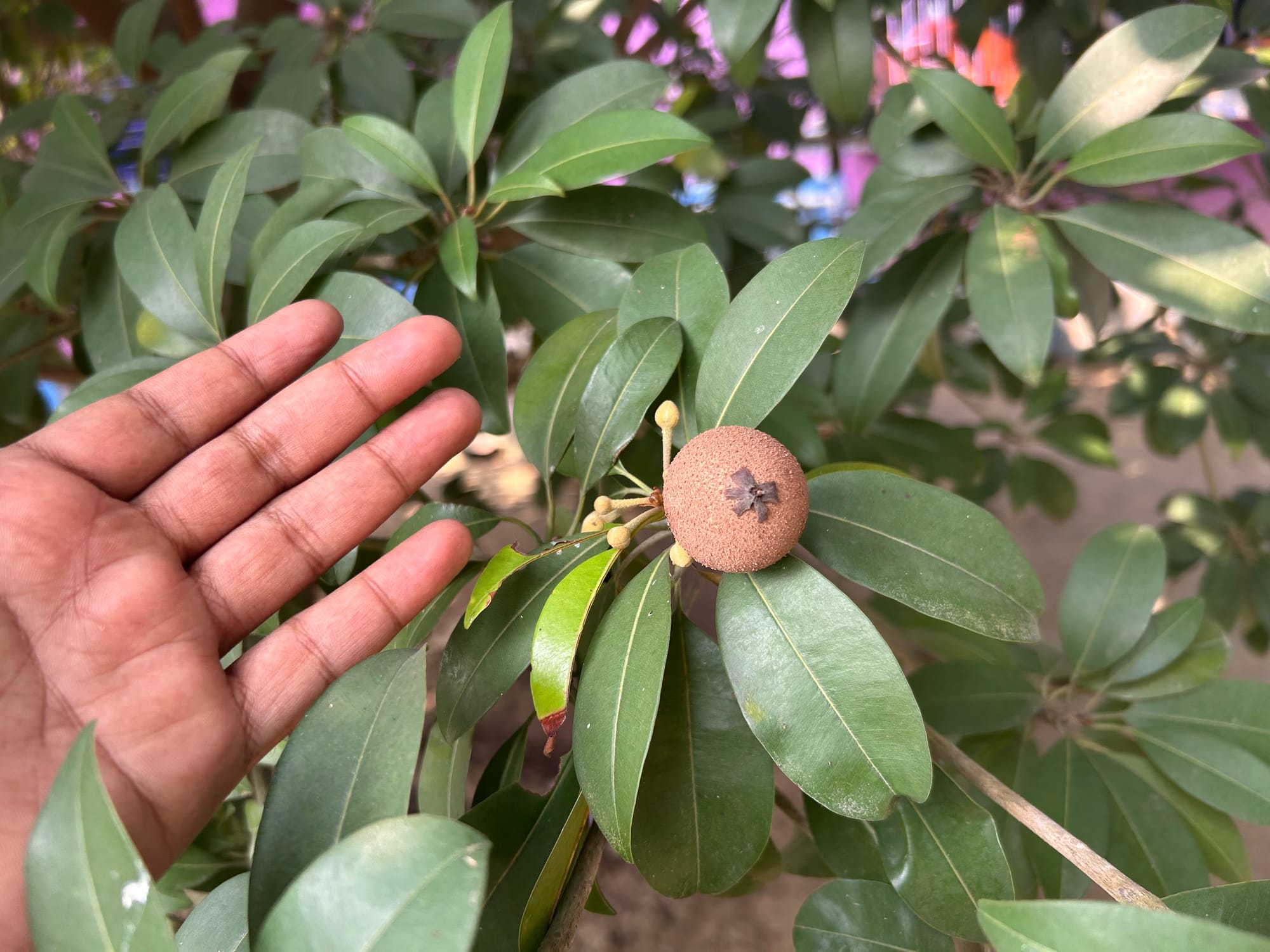
I tried to smell the flowers, but it was really bad. If you break the stems, a white sticky liquid will emit. It tastes sweet. ( It smells like light alcohol to me)
Jujube
Jujube (Ziziphus jujuba), also known as the Chinese date, can be grown in Florida. People mostly grow Jujube in North and Central Florida. But I tried to grow it in South Florida and the result is good. You can see the picture below:
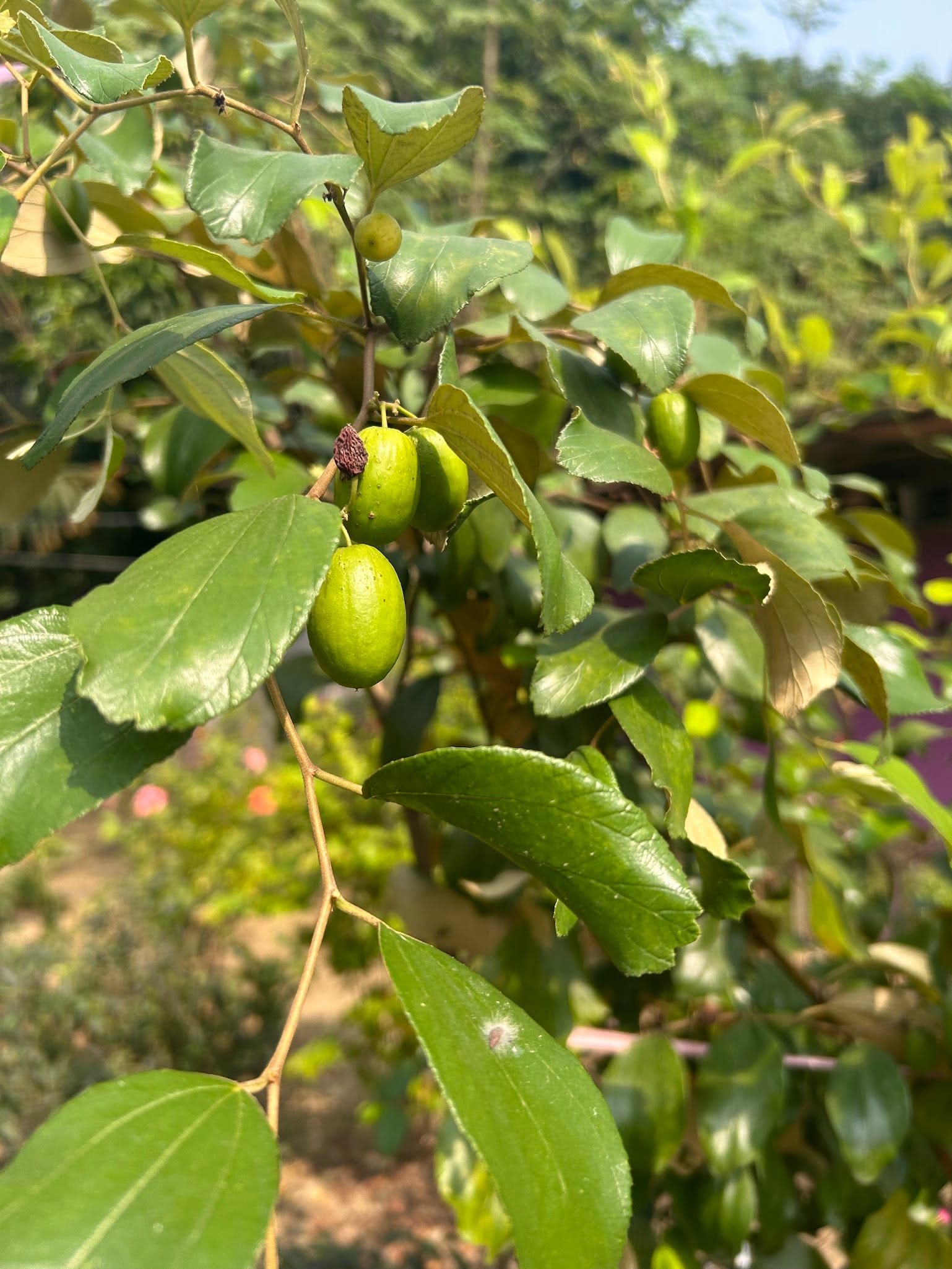
It demands for 6 to 8 hours of direct sunlight. Pruning is not necessary for this tree. There are lots of varieties of this tree. If you don't have enough space go for small variants.
Starfruit
I love the blossoms more than the fruits of the starfruit tree. I was shocked to see the fruits in the first year of planting.
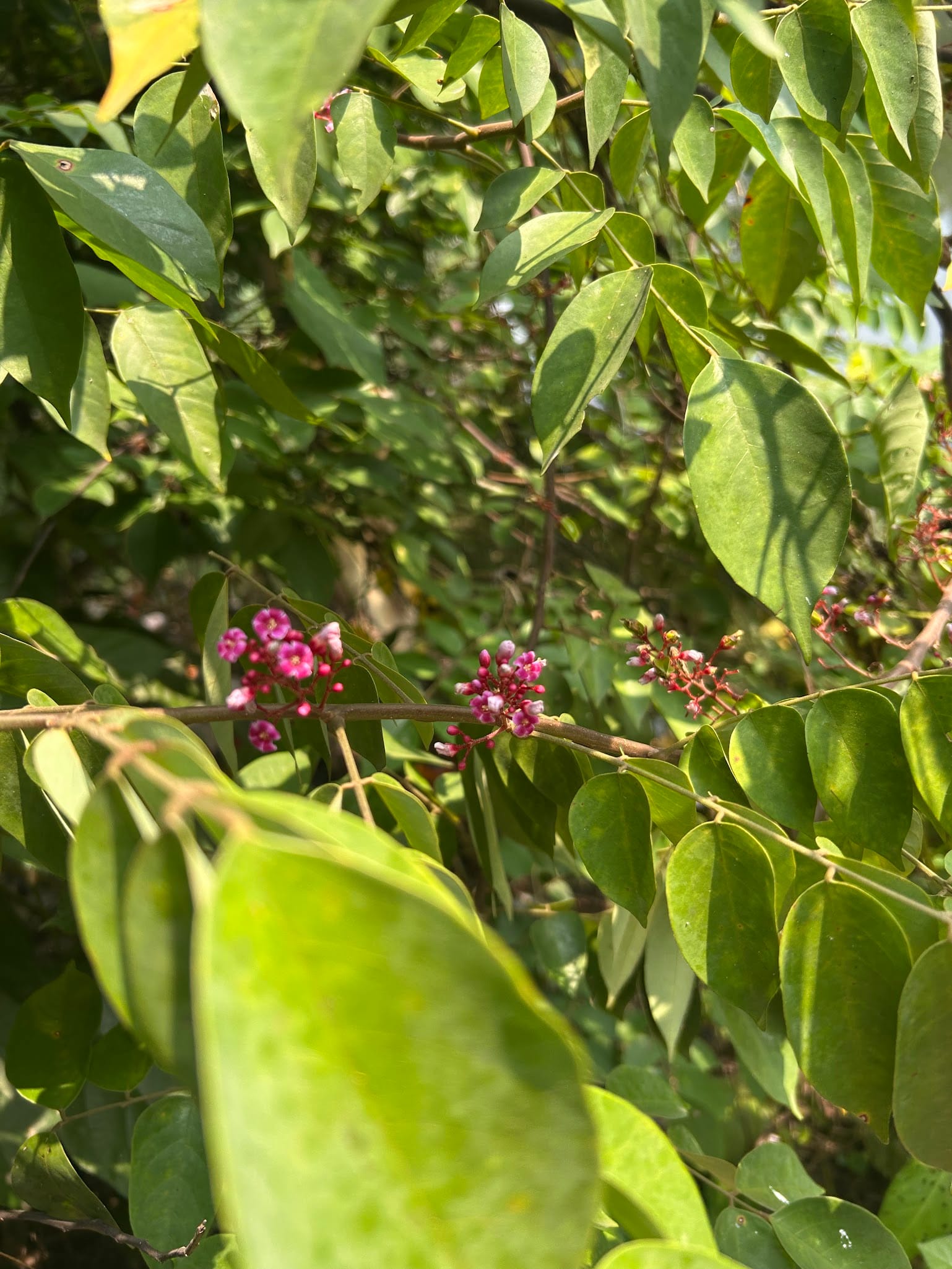
Starfruit, or carambola (Averrhoa carambola), grows very well in Florida, particularly in southern and central areas. It needs protection in zone 9a during winter.
If you do not water well in the dry season, you may witness new fruits falling down.
Try to find the Arkin variety in the nurseries. They taste sweeter than other variants.
Wax Apple
Wax apple also known as Java Apple, is beautiful due to its wax-like texture.
To be honest, I don't find it tasty but the harvesting is shocking. You will get lots of fruits you can't finish on your own. (Share with neighbors)
Wax apple attracts wasps a lot. Wasps love to eat them.
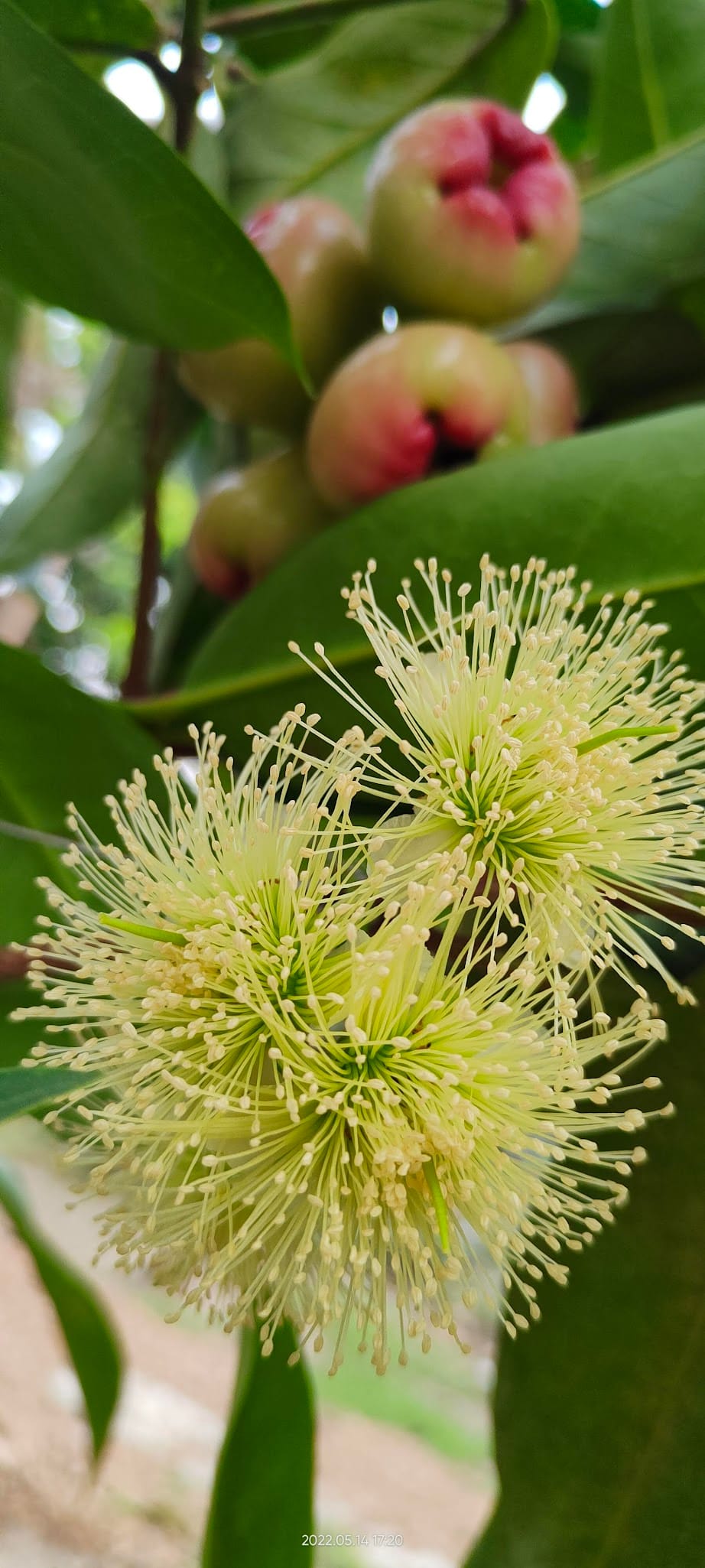
Barbados Cherry
Barbados Cherry tree is beautiful on its own.
Take a look:
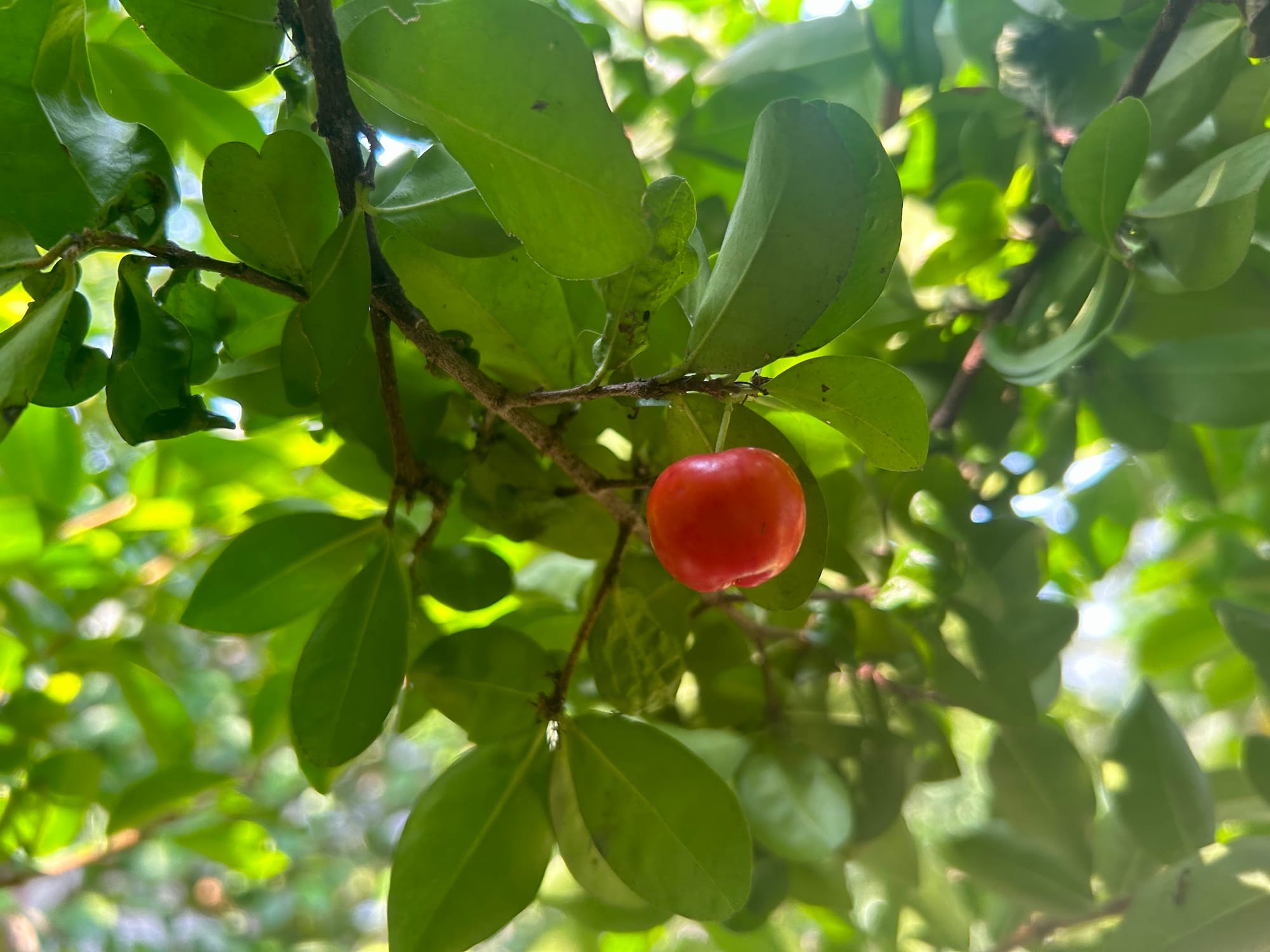
The variant you are seeing is not a good variant and the harvesting is really bad. But the taste is sweet and nice. Plant it in the spring season. Once the plant is matured, no need to water much.
I recommend that you look for the ‘Florida Sweet’ and ‘Manoa Sweet’ varieties. Unfortunately, I could not find those.
This is how the tree looks like:
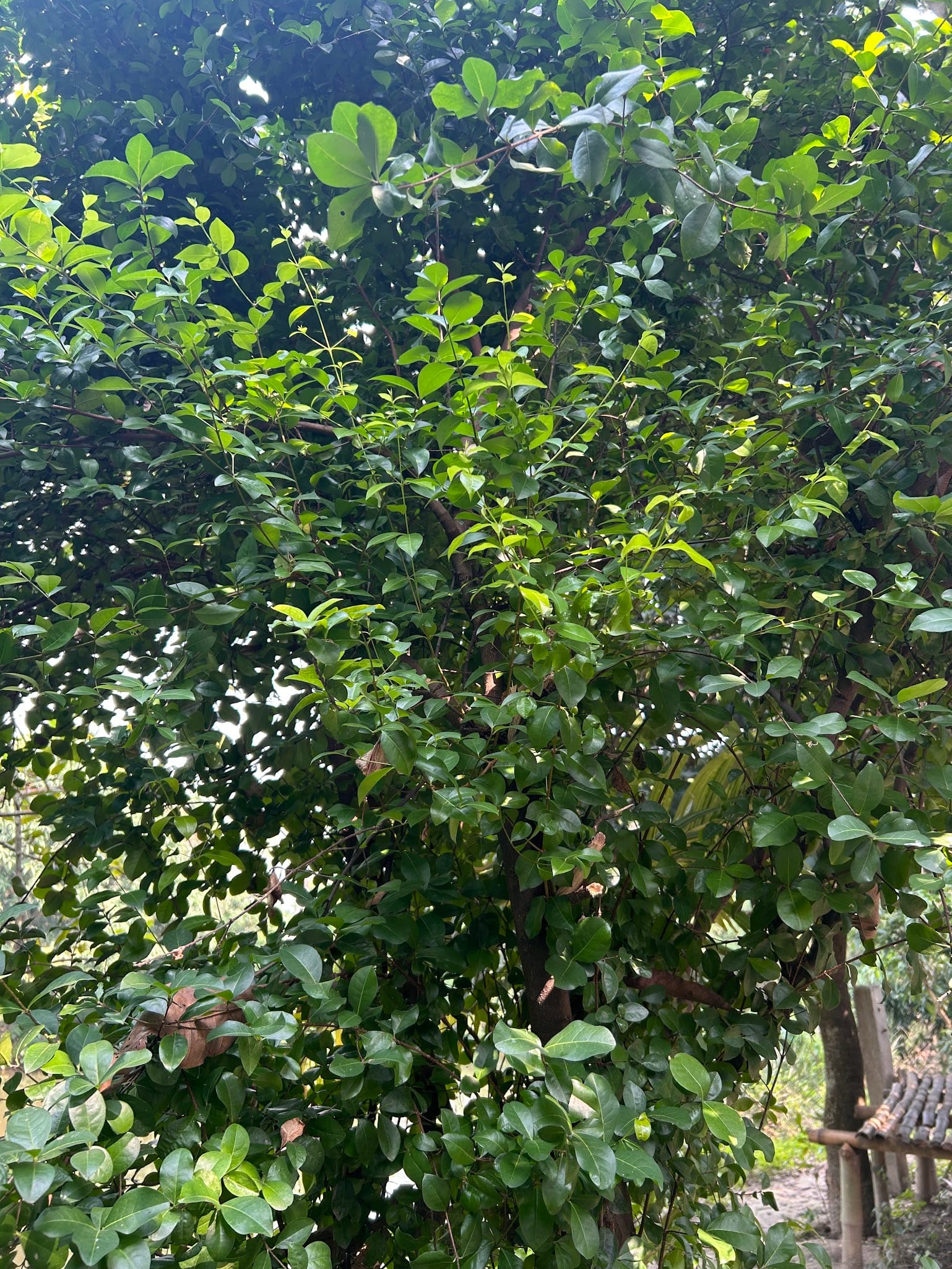
This is not the harvesting time, thus you can't see fruits.
Pomelo
Pomelo falls under the citrus category. In Florida, you will get fruits in Winter. But I have noticed they give fruits twice a year.
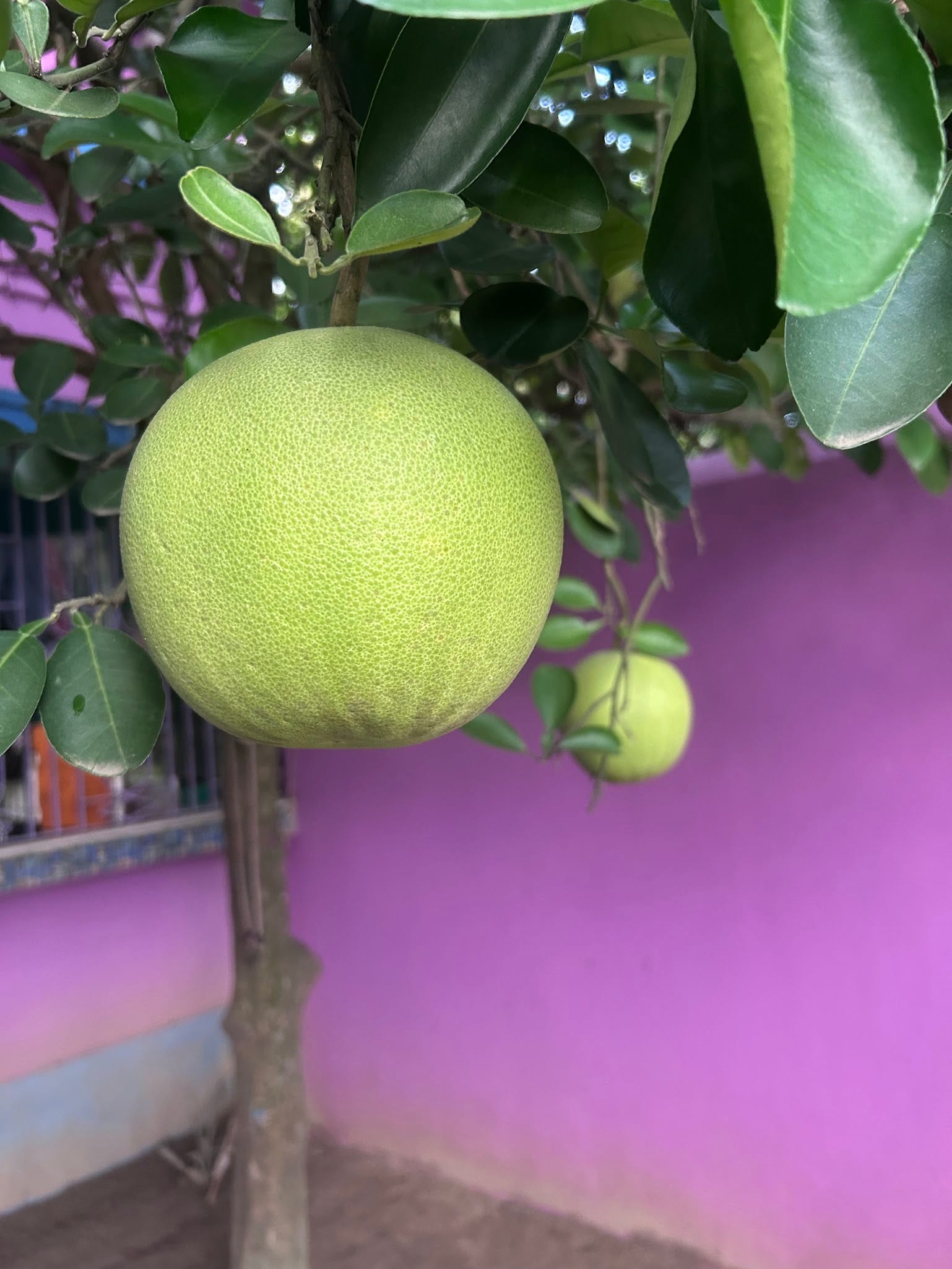
It's similar to grapefruit which is a hybrid version of pomelo.
It is an extremely low-maintenance fruit tree to grow in Central and South Florida.
I don't like Guava that much as in the rainy season it attracts lots of worms inside the ripened fruits.
There are a lot of other fruit trees that we can grow in Florida but could not mention here.
Some of the trees I am growing right now are new to me and have yet to harvest. Once I harvest those, I will give updates. Subscribe to this site to get updates. (It's free!)
Fruit trees you should avoid growing in Florida: Cherry Trees, Apple Trees, Apricots, Peaches and Nectarines, Pears, and Olives. I am suggesting avoiding these as they don't grow well in the highly humid and warm climate of Florida.
Florida Native Fruit Trees
I have a special respect for those who believe in planting native plants to help the local ecosystem. They attract local birds and butterflies.
You can check my dedicated article on: Easy to Grow Florida Native Plants
| Plant Name | Suitable Region | Max Height (ft) | Fruiting Time / Harvesting Season | First Harvest (Years) |
|---|---|---|---|---|
| Pawpaw (Asimina triloba) | North, Central | 25 | Late Summer | 3-4 |
| Sea Grape (Coccoloba uvifera) | South, Coastal | 35 | Late Summer to Fall | 5-6 |
| Simpson’s Stopper (Myrcianthes fragrans) | Central, South | 20 | Spring to Summer | 2-3 |
| Southern Crabapple (Malus angustifolia) | North, Central | 30 | Fall | 4-5 |
| Wild Lime (Zanthoxylum fagara) | Central, South | 15 | Summer | 3-4 |
The only drawback is the first harvesting time. You need to wait for a longer time.
If you find it helpful please consider sharing with your friends.
If you need any advice on growing fruit trees in Florida, feel free to contact me or comment below.
Check the full-year planting calendar for Florida.
